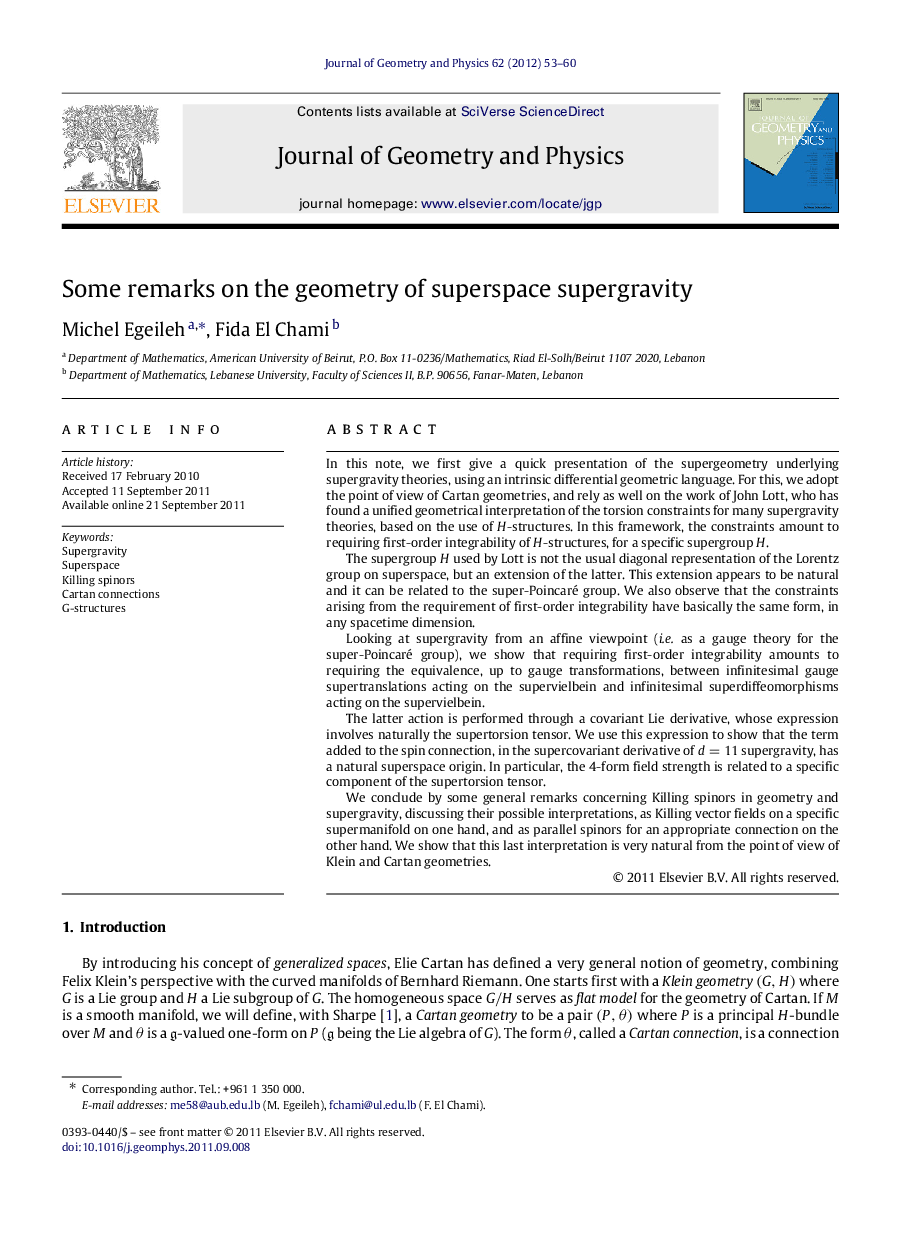| Article ID | Journal | Published Year | Pages | File Type |
|---|---|---|---|---|
| 1894885 | Journal of Geometry and Physics | 2012 | 8 Pages |
In this note, we first give a quick presentation of the supergeometry underlying supergravity theories, using an intrinsic differential geometric language. For this, we adopt the point of view of Cartan geometries, and rely as well on the work of John Lott, who has found a unified geometrical interpretation of the torsion constraints for many supergravity theories, based on the use of HH-structures. In this framework, the constraints amount to requiring first-order integrability of HH-structures, for a specific supergroup HH.The supergroup HH used by Lott is not the usual diagonal representation of the Lorentz group on superspace, but an extension of the latter. This extension appears to be natural and it can be related to the super-Poincaré group. We also observe that the constraints arising from the requirement of first-order integrability have basically the same form, in any spacetime dimension.Looking at supergravity from an affine viewpoint (i.e. as a gauge theory for the super-Poincaré group), we show that requiring first-order integrability amounts to requiring the equivalence, up to gauge transformations, between infinitesimal gauge supertranslations acting on the supervielbein and infinitesimal superdiffeomorphisms acting on the supervielbein.The latter action is performed through a covariant Lie derivative, whose expression involves naturally the supertorsion tensor. We use this expression to show that the term added to the spin connection, in the supercovariant derivative of d=11d=11 supergravity, has a natural superspace origin. In particular, the 4-form field strength is related to a specific component of the supertorsion tensor.We conclude by some general remarks concerning Killing spinors in geometry and supergravity, discussing their possible interpretations, as Killing vector fields on a specific supermanifold on one hand, and as parallel spinors for an appropriate connection on the other hand. We show that this last interpretation is very natural from the point of view of Klein and Cartan geometries.
